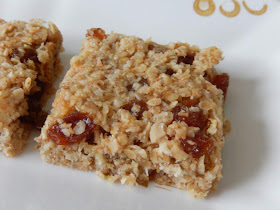 This was one of my Christmas desserts - not very festive, but I'd just made 2 large jars of lemon curd with some excess lemons, and needed to find ways of using it. I used this recipe for my curd, but this time added the zest of all 5 lemons. Lemon curd makes a tasty dessert, swirled into natural yogurt and topped with a sprinkle of plain granola, but it takes a long time to get through a whole jar that way, let alone two. This recipe used around 200g - I didn't weigh it, just spooned out about half a jar.
This was one of my Christmas desserts - not very festive, but I'd just made 2 large jars of lemon curd with some excess lemons, and needed to find ways of using it. I used this recipe for my curd, but this time added the zest of all 5 lemons. Lemon curd makes a tasty dessert, swirled into natural yogurt and topped with a sprinkle of plain granola, but it takes a long time to get through a whole jar that way, let alone two. This recipe used around 200g - I didn't weigh it, just spooned out about half a jar.I made a sweet shortcrust pastry, using 200g plain flour, 1/4 teaspoon baking powder, a pinch of salt, 100g of butter, 50g of icing sugar, an egg and enough water to make a soft dough. After resting in the fridge I lined a shallow fluted flan tin with the pastry (the recipe won't use all the pastry, if you can roll it out really thinly - I made mince pies with the leftovers). I spooned 200g lemon curd onto the raw pastry, spread it evenly and refrigerated again while I made the hazelnut frangipane. I did this by putting 100g softened butter,
100g caster sugar, 50g SR flour, 50g ground roasted hazelnuts, half a teaspoon of vanilla extract and two eggs into a bowl and beating until well combined. The frangipane was spread gently over the lemon curd, working from the edges inwards, and being careful to get the batter to seal against the pastry edges, to minimise the chance of any lemon curd bubbling out. I sprinkled a handful of finely chopped roasted hazelnuts over the frangipane, then decorated the top with a few pastry shapes cut out from the excess pastry - they're supposed to be snowflakes but look more like stars. The tart was baked, on a pre-heated baking sheet, at 200C for 15 minutes, then the heat was lowered to 170C and baking continued until the frangipane was golden and firm - about another 20 minutes. The frangipane rose quite a lot while cooking, but thankfully sank back to give a level surface as it cooled - I think perhaps SR flour was unnecessary, but it does give a lighter texture to the tart.
The combination of lemon and hazelnuts was delicious, and the frangipane had the lightness of a sponge rather than being stodgy, as is sometimes the case when no raising agent, or all nuts, rather than a mixture of nuts and flour is used. I chose to use hazelnuts as they have a much stronger flavour than almonds, and because I thought they would work better with the tanginess of the lemon curd. I think the lemon curd would have overwhelmed the nut flavour if almonds were used, but this way the hazelnut flavour won.

















































